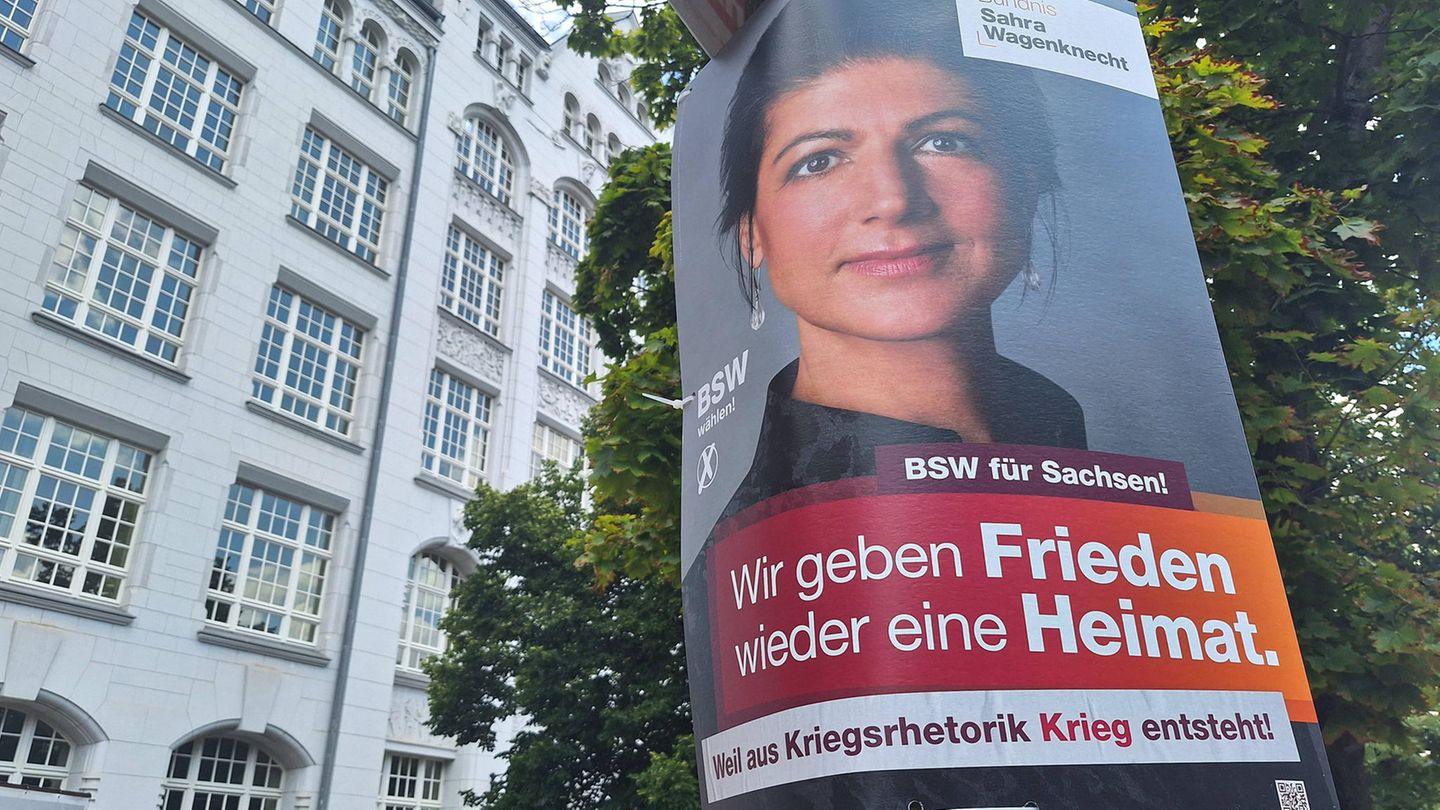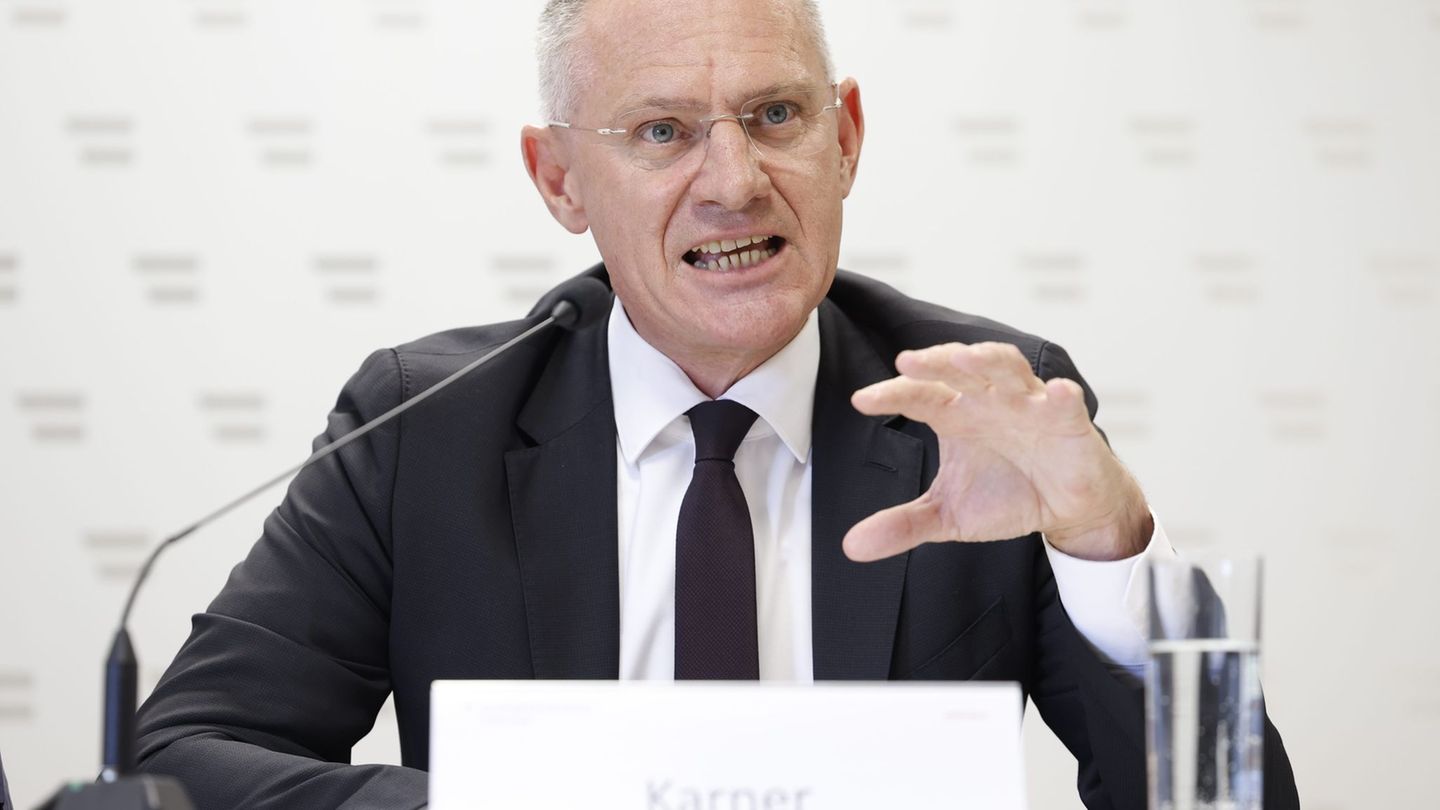Exclusive
The BSW is on the verge of a huge success in the state elections. The reduction in aid to Ukraine is apparently a major election campaign hit in Saxony and Thuringia.
The Sahra Wagenknecht (BSW) coalition is set to have a great success in the state elections in Saxony and Thuringia on 1 September. This is shown by Forsa surveys in the two states commissioned by star and RTL. The BSW would therefore immediately achieve 13 percent in Saxony and 18 percent in Thuringia. The AfD, on the other hand, would lose a lot of support compared to the Forsa survey from the beginning of January – in Saxony from 34 to 30 percent, in Thuringia even from 36 to 30 percent. In both states, the mood is not shaped by state political issues. Above all, citizens are concerned about dissatisfaction with the federal government, the war in Ukraine and worries about inflation, crime and immigration.
Sahra Wagenknecht and the BSW are looking forward to double-digit results
The figures for Saxony in detail: The CDU would currently be the strongest party with 33 percent, the AfD would come in second place with 30 percent. The BSW would be in third place with 13 percent. The SPD and the Greens would each only achieve 6 percent. This would make a continuation of the Kenia coalition just as possible as an alliance between the CDU and BSW. The Left would no longer be represented in the state parliament with three percent. The other parties would achieve 9 percent, including the FDP with less than 3 percent.
In Thuringia, the situation is much more confusing: Currently, the AfD would be the strongest party with 30 percent. The CDU would come in second with 21 percent, but would barely gain compared to the last state election. The BSW would follow closely behind with 18 percent. The Left would lose heavily and only come in fourth with 13 percent. The SPD would make it into the state parliament with 7 percent, while the Greens would miss this goal with 4 percent. The other parties would reach 7 percent, including the FDP with less than three percent. Forming a government would be very difficult. The CDU would need the BSW and SPD for a majority in the state parliament.
Large majority in favor of cutting aid to Ukraine
In both Saxony and Thuringia, a clear majority of 57 percent is in favor of the federal government reducing support for Ukraine. Only a small minority (15 percent in Saxony, 9 percent in Thuringia) thinks that Ukraine should receive more support from Germany than it has received so far. 26 percent in Thuringia and 21 percent in Saxony believe that the current level of support is correct. The overwhelming majority (between 81 and 94 percent) of supporters of the AfD and the BSW are in favor of reducing support for Ukraine.
In both states, citizens are rather dissatisfied with the work of the state governments, but the incumbent state premiers are significantly more popular than their parties. In a direct election in Saxony, Michael Kretschmer (CDU) would even achieve 50 percent. Only 14 percent would choose Jörg Urban from the AfD, and just 2 percent for Sabine Zimmermann from the BSW. 34 percent would not vote for any of the three candidates. Since 56 percent of BSW supporters and 40 percent of SPD voters would also choose Kretschmer, the CDU may still have potential here.
If the Prime Minister were to be elected directly in Thuringia, Bodo Ramelow (Left Party) would receive 42 percent. Björn Höcke (AfD) would only receive 16 percent, and Katja Wolf (BSW) only 6 percent. It is striking that only 10 percent would choose the CDU’s top candidate Mario Voigt, and only 46 percent of his own supporters. 26 percent would not choose any of the four candidates surveyed.
In view of the discrepancies in the results on various questions, Forsa boss Manfred Güllner believes the outcome of the elections in Saxony and Thuringia is “not yet entirely clear”. Interest in state elections is “quite high”. The votes on election day could still differ from the mood currently determined.
The data was collected online by the market and opinion research institute forsa for stern and RTL Deutschland between August 7 and 14, 2024 in the population-representative Forsa Omninet panel. Data basis: 1041 respondents in Saxony; 1011 respondents in Thuringia. Statistical error tolerance: +/- 3 percentage points
Source: Stern
I have been working in the news industry for over 6 years, first as a reporter and now as an editor. I have covered politics extensively, and my work has appeared in major newspapers and online news outlets around the world. In addition to my writing, I also contribute regularly to 24 Hours World.




